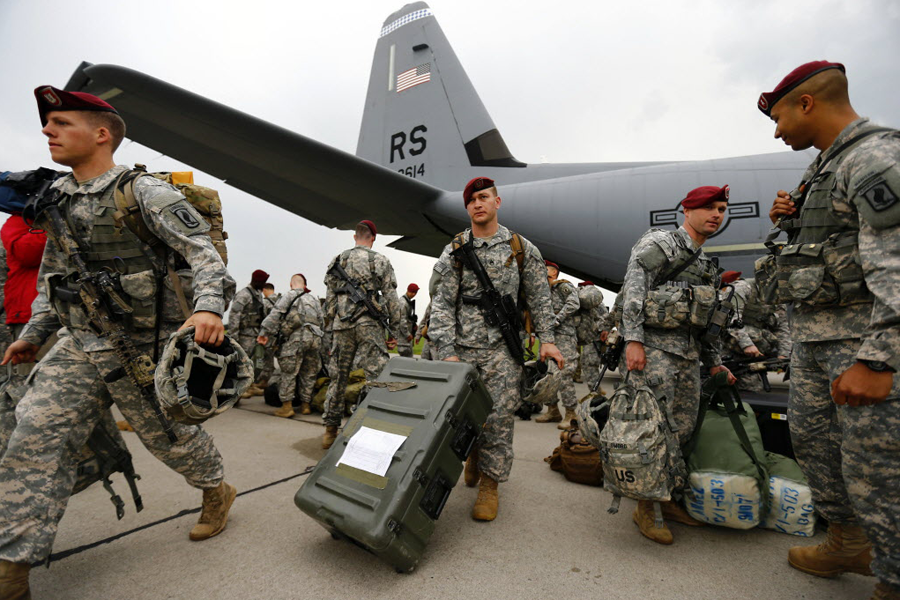US troops arriving in Eastern Europe. Is it more than symbolic?
Loading...
| Washington
The Pentagon is sending a contingent of 150 US troops to Poland this week, the first piece of what US officials describe as an effort to reassure Eastern European allies that the United States has their back in the wake of Russian aggression.
The contingent, which began arriving Wednesday, is the first of four such units headed to Eastern Europe for training exercises. While some military analysts say the deployments will have little to no impact on the tense military situation in the region, the Pentagon insists that its reply to Russian troops movements near Ukraine is not just a symbolic gesture.
“Anytime you put troops on the ground and doing exercises – in this case for a month at a time – it’s more than symbology,” Admiral John Kirby, the Pentagon press secretary, said in a briefing with reporters Tuesday. “The kind of work that we’re going to be doing is real infantry training. And that’s not insignificant.”
There will be a “company-sized” contingent of US troops headed to Poland for “the first in a series of expanded US land force training exercises.” In the coming days, US troops will also be heading to Lithuania, Latvia, and Estonia for similar exercises, for a total of 600 troops in the region by the end of the week.
Does this mean, then, that the Pentagon believes that the Russians have designs on Poland and other Baltic states?
“What I’ll tell you is that nothing we’ve seen out of Moscow, nothing we’ve seen out of Russia or their armed forces, is de-escalating the tension – is making things any more stable in Ukraine or on the continent of Europe,” Admiral Kirby said.
He then offered some insight into what Pentagon officials hope to achieve by this show of strength. “What would be very helpful is if they remove their forces off that border and took concrete actions to respect the sovereignty of Ukraine.”
The move is also meant to buoy US partners in the region. “Since Russia’s aggression in Ukraine, we have been constantly looking at ways to reassure allies and partners,” Kirby said. “The message is to the people of Poland and Lithuania, Estonia – that the United States takes seriously our obligation under Article 5 of the NATO alliance, even though these aren’t NATO exercises.” Article 5 is the mutual defense treaty, that an attack on one NATO member is an attack on all.
The exercises are not being done through NATO, but rather bilaterally between the US and partner countries. While NATO was informed of the planned US troop movements to Europe, that was the extent of it. “NATO leadership has been very supportive of our willingness and desire to pursue these bilateral exercises,” Kirby said. “Do we need to seek specific approval? No, but we certainly did inform.”
Still, this modest show of force is not likely to inspire the Russians to roll back their forces and is “a waste of time,” says Stephen Blank, senior fellow for Russia at the American Foreign Policy Council in Washington, D.C. “Sending company-size units is purely symbolic – a company is not the answer.”
Better to make a back channel offer to send NATO troops to Ukraine at the invitation of Kiev, says Dr. Blank, who served as a professor at the US Army War College for 24 years. “I’d send larger NATO units at the invitation of Kiev. The only answer here is not in Poland, but in Ukraine,” he adds. “That’s the only thing the Russians are going to understand.”
US military officials hope, however, that sending ground troops will send a message – particularly since they might be there a while. The Pentagon press secretary described the US troops in Poland as a new “persistent presence.”
True, the exercises will last “about a month or so,” but then US commanders will “rotate fresh troops in for more exercises,” Kirby says. “It could go beyond the end of this year. We just don’t know,” he added. “We’re just going to have to see how it goes.”







